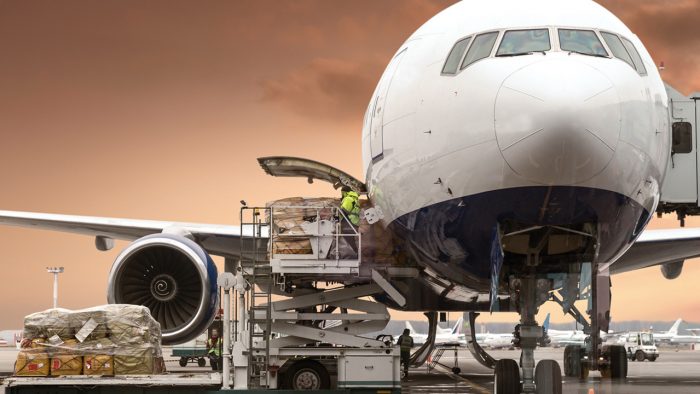
Airlines raise air freight rates by up to 30%
14 May, 2018Airlines have implemented sizeable air freight rates increases on major east-west trade lanes for the current IATA summer season, in some cases of more than 30%, to a backdrop of buoyant demand and tight capacity, Panalpina’s head of global air freight, Lucas Kuehner, told Lloyd’s Loading List in an interview.
Commenting in more detail on the background to the price hikes and how the first quarter of 2018 had played out, he said: “Contrary to the unrealistic expectations of some industry players, there was a dip in activity in the first months of the year after the very hectic end to 2017. This brought some temporary downward pressures in rates just before and after the Chinese New Year.
“Nevertheless, an indication of how strong the market has remained can be gauged by the fact that the record volume growth in the first quarter of last year was surpassed in Q1 2018.”
Kuehner underlined that the rate increases range from 10-30% and are even higher on certain routes, South America inbound, Mexico and Brazil in particular, being a prime example, where demand is being driven by strong manufacturing activity and capacity is scarce.
He highlighted the vigour of ex-Europe air freight, both to Asia and on Transatlantic routes, while the Asia-Europe and Transpacific trades were holding up well too.
“Airlines have seen an opportunity for significant rate hikes and taken it. It’s always a challenge putting a convincing argument across to shippers when it comes to rate increases, but the serious difficulties in obtaining additional capacity in Q4 last year are still fresh in the memory and it’s from this perspective that our negotiations with customers have taken place.
“Overall, I think there’s a greater awareness on the part of shippers that we continue to be in a supply-deficient market and that space comes at a price. Another lesson learned from Q4 last year is that you need to plan well in advance to secure capacity, and that’s what we’re focused on with customers too.”
Asked whether airlines were deliberately limiting capacity in the interests of yield management as some industry observers have claimed, Kuehner replied: “No. I think they would genuinely bite your hand off for additional space because the business is there and there’s even more money to be made. But there simply isn’t much extra (capacity) available. Maindeck space is particularly scarce, and the few new freighters coming off the production line are going to the integrators.”
Kuehner revealed that Panalpina had drawn up plans to increase the number of scheduled charter flights within its ‘Charter Network’ but had put them on hold due to high charter rates.
“Capacity is the primary issue right now, and the overriding motivation of carriers in entering into cargo joint-ventures with their peers is to get access to more belly and maindeck space by pooling it, in order to optimise its use.
“In the present context, I think we’ll see more of these tie-ups and alliances in the future – not so much in terms of M&A as we’ve seen in ocean shipping – but on an operational basis. Of course, it raises questions of whether carriers in co-operating in this way will exert greater control over air freight rates.”
Turning to the market outlook, Kuehner said it was hard to see the current positive market conditions changing in the months to come, but he did note that the risk of a trade war between the US and China was causing some uncertainty.
“It’s quite possible that some of the growth in ocean and air freight volumes in Q1, and what we are seeing so far in Q2, is due to shipments being brought forward in anticipation of such a (trade) conflict. If this is the case, we would probably see a quieter than normal June, July, August.”
Kuehner added: “If a trade war did come about, one could speculate that it would have a significant impact on the booming cross-border e-commerce trade, which is occupying an increasingly prominent place in air freight markets.
“Near-shoring could also gain momentum but the past has shown that such a trend doesn’t necessarily have a negative impact on the sector. But all this remains pure speculation for the time being,” Kuehner added.
Categorized in:New
This post was written byTL Pacífico


Comments are closed here.